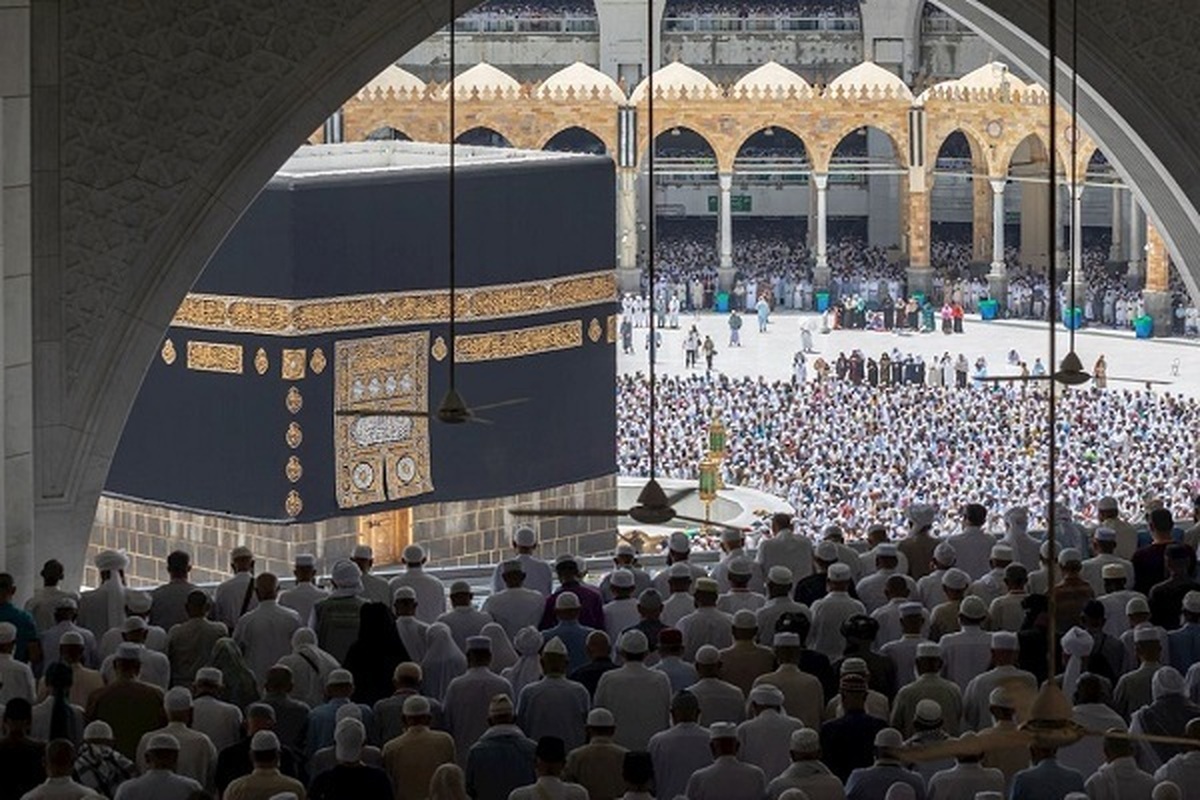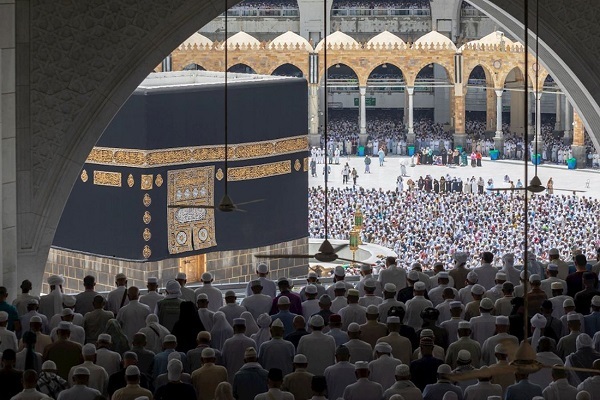Features of Hajj Pilgrimage


Imam Reza (AS) said that during the Hajj pilgrimage, the teachings of Ahl-ul-Bayt (AS) are taught and spread across the world.
In Hajj, the pilgrims are God’s guests and they go to the place from which the earth extended: “And the earth He extended after that.” (Verse 30 of Surah An-Nazi’at)
The House of God, along with the pilgrims and in remembrance of Abraham (AS) and Muhammad (PBUH), renews allegiance with the Hand of God and remembers that the first congregational prayers that included three people- Muhammad (PBUH), Khadijah (SA) and Ali (AS)- has now turned to prayers attended by millions of people.
During Hajj, when one has peace of mind and is in a safe region, he remembers God and the resurrection Day.
The walking during circumambulation, the standing up and sitting during Salah, and the watching of Kaaba all have positive effects.
The House of God is a place that is off limits to Mushrikeen (unbelievers). It is a place in which all pilgrims are similar. It is as if they have come to their own home and thus they can say their 4-Raka’a prayers in full as if they are not passengers.
In four centers, a passenger can perform his or her Salah in full:
The Center of Divinity: Mecca
The Center of Prophethood: Prophet’s Mosque
The Center of Wilaya: Kufa Mosque
The Center of Martyrdom: Holy Shrine of Imam Hussein (AS)
In these four centers, all people are familiar and related to each other. So there is no need to say prayers in shortened form. They can perform Salah in full. There, the Qibla is also precise and real.
Hundreds of divine messengers have said prayers there.
If one Salah is accepted there, all of a person’s Salahs in life will be accepted.
According to the Quran, anyone who has bad intentions against Mecca will be severely punished.
Abraham (AS) and Ismail (AS), at the order of God, have cleaned the place from impurities.
There, Wilaya and Bira’a are manifested. Even stones there are different from those anywhere else. We kiss one stone and walk round it but we hurl pebbles at another stone. One is the stone of Wilaya and the other the stone of Bira’a.
The Grand Mosque in Mecca is one that is held in special reverence. God is its engineer, Abraham (AS) is its architect, Ismail (AS) is its worker, Imam Ali (AS) is its idol-breaker, Muhammad (PBUH) is its prayer leader, Khadijah (SA) is the one who says prayers there, Bilal is its muezzin, and Zamzam is its water.
Adjacent to it is Safa and around it are people. It is a burying place of prophets of God, the place of the beginning of Prophet Muhammad’s (PBUH) Mi’raj and a place where sinners repent.
To enter this place, we perform four Ghusls (full ablutions):
One before Ihram,
One for entering the safe region,
One for entering Mecca,
And the fourth for entering the Grand Mosque.
What kind of a place is this for entering which we need to perform Ghusl four times?
Mecca is not geography, but it is history. Mecca is not land but it is time.
When in Mecca, I repeat saying Labayk because God likes me and has invited me. I am His guest. I repeat saying Labayk again and again in order to feel in the depth of my heart the joy of being God’s servant.


